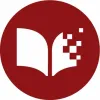Take a look inside 7 images
Stanford History Education Group
Pros: The huge repository of resources enables students to investigate historical questions and make claims about primary documents.
Cons: No privacy policy; struggling readers and ELL students may require support with text-heavy documents.
Bottom Line: A gold mine of cross-curricular literacy lessons that encourage sound, research-backed strategies for reading, analysis, and critical thinking.
Take advantage of the site's ready-to-go U.S. and world history lessons to provide supplemental resources or comprehensive coverage of content. Everything on Stanford History Education Group's website is made for easy translation to the classroom, and for upgrading pedagogical practice to deepen students' understanding and skills. Teachers can challenge students to compare early empires and past civilizations to our present-day global environment, helping them to develop an understanding of how technology has made the world much smaller. Students know it's possible to see what's happening around the world in real time, but using the site's resources and assessments, they can develop a critical understanding of how these events are reported as well as how past events have shaped the present, or offer lenses through which to view the present.
Give students a chance to explore the site on their own, too, inviting them to study historical events that might not be covered in depth in history class, such as the Women's War of 1929 in Nigeria or the Zoot Suit Riots in Los Angeles. Encourage them to view multiple related documents and draw connections; for instance, have them connect the exploitation of former slaves through sharecropping to modern inequalities in land ownership and wealth. Or spark discussion by comparing the lessons and documents on the site to classroom materials. Get students to consider how studying a classroom textbook, for instance, differs from the kinds of inquiry offered through the Stanford History Education Group site and by digging into primary sources.
The Stanford History Education Group website is a free repository of document-based curricula, inquiry-based lessons, and innovative assessments spanning everything from social studies to ELA to news and media literacy. Three main sections make up the bulk of the site. Reading Like a Historian features printable posters covering topics like sourcing, close reading, and contextualization. In conjunction, there are over 100 lessons where kids use these inquiry-based strategies to look at multiple documents, determine reliability of sources, and analyze evidence to make historical claims. The second section, Beyond the Bubble, contains dozens of History Assessments of Thinking (HATs) organized by time period that help students think like historians and that give teachers tools to measure that thinking. Within the section are links to Library of Congress resources that aid in the use of the assessments and support historical discovery. Finally, the Civic Online Reasoning section helps students develop the critical thinking skills necessary to determine the reliability of digital and online resources and validate claims on websites and social media outlets like Wikipedia, Facebook, Twitter, and others.
Although some of the documents are text-heavy, there are modifications available to make the content more accessible to all students. Keep in mind that users need to set up a free account in order to download all of the free materials.
This free collection offers teachers many trusted possibilities to better integrate historical inquiry, close reading strategies, and primary document analysis into their classrooms. Lessons help students establish background knowledge and identify key questions. Students then engage with the documents by comparing them, using a historical reading skill, developing a hypothesis, or participating in a structured discussion. Students are encouraged to debate, using evidence-based claims and allowing for multiple interpretations of history. The assessments can also help students engage in evidence-based inquiry and develop argumentative writing skills based on their analysis of letters, artifacts, photographs, congressional testimonies, and news articles that range from Ancient Rome to the Civil War to the civil rights movement.
Through these activities, students gain valuable skills related to information literacy, identifying bias and perspective, and credible sourcing. Since the lessons require students to gather evidence and make historical claims, students learn to think for themselves about historical events rather than just memorize facts and dates. The strength in this is that students are the investigators, and they're not relying on a textbook or a teacher's lecture to understand the event. Teachers should note that lessons vary in terms of length, student configuration, homework, etc., and may need to be adapted to fit the needs of the students.
















